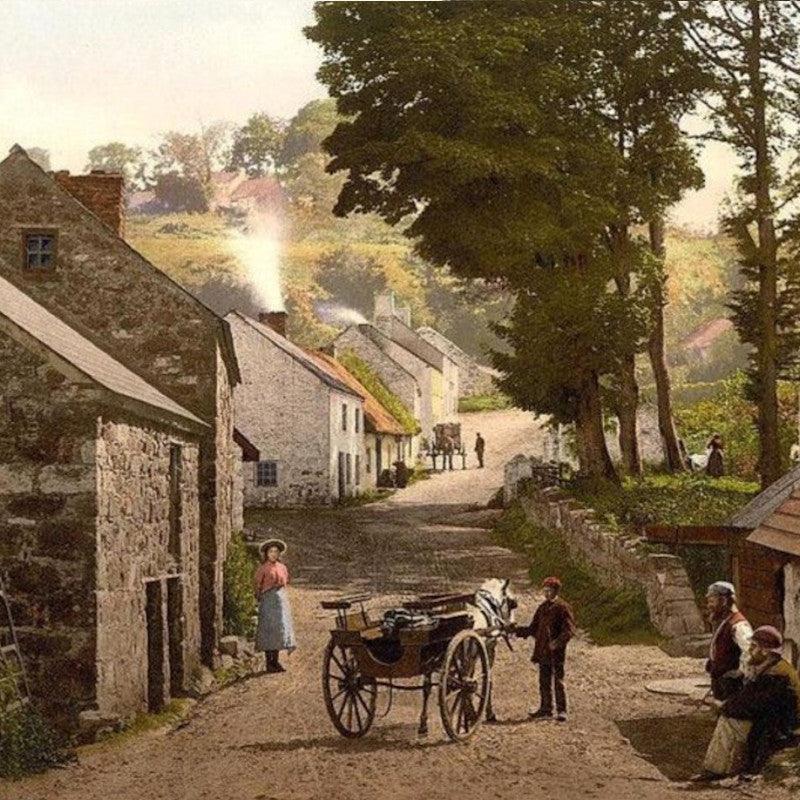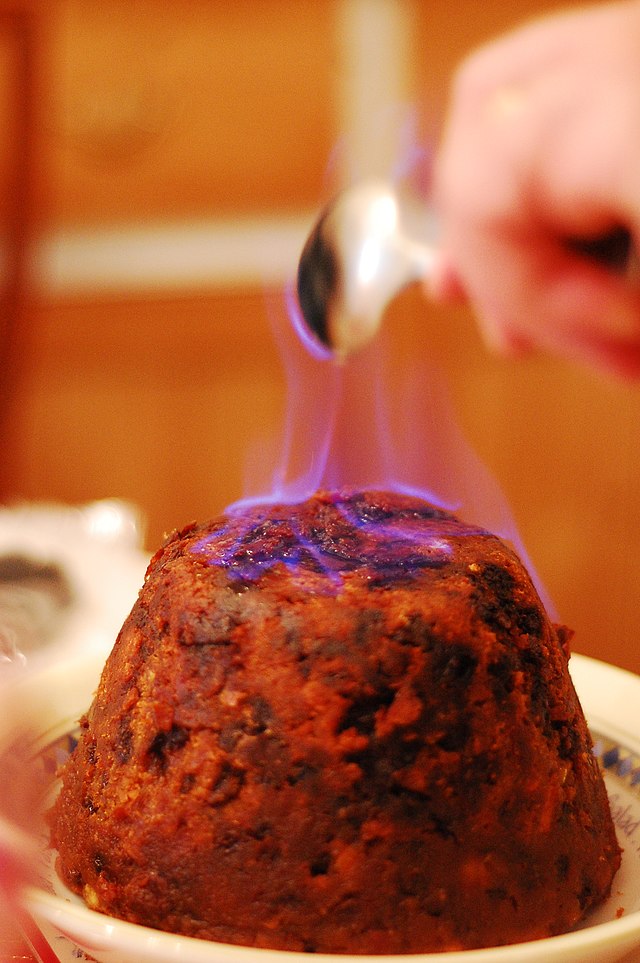Terug naar school in Engeland van Jane Austen

Waarom ze Jane Fairfax niet leuk vond, is misschien een moeilijke vraag om te beantwoorden; Mr. Knightley had haar ooit verteld dat het was omdat ze in haar de echt volleerde jonge vrouw zag, die ze zelf wilde worden gedacht; En hoewel de beschuldiging destijds gretig was weerlegd, waren er momenten van zelfonderzoek waarin haar geweten haar niet helemaal kon vrijgeven.Deze maand, op en neer door het land van Engeland, zullen kinderen glanzende nieuwe schoolschoenen aanrichten, rugzakken laden en nog een jaar naar school draven. Though I myself have been out of formal education for some years now, I still use the time of year as an opportunity to reflect on the goals I set at the start of the calendar year, clear out tired pieces in my wardrobe, and invest in a new notebook. Het schooljaar is begonnen in september sinds de jaren na het aannemen van de Education Act 1880, waarvoor alle kinderen van vijf tot tien jaar nodig waren om naar school te gaan, vermoedelijk om spijbeligheid te minimaliseren. Zie je, in de zomermaanden wordt van de meeste kinderen verwacht dat ze helpen met huiskarakter en kinderopvang terwijl hun ouders het land werkten. Bij het starten van het nieuwe schooljaar in de herfst, De hoop was dat een afname van veldwerk voor het jaar de schoolbezoek zou stimuleren. Maar als, tot nu toe, scholing niet verplicht was geweest voor alle kinderen, hoe zag scholing dan in de tijd van Jane Austen eruit?- Emma
Jane Austen's opleiding
In de tijd van Jane Austen was een opleiding verre van een gegeven - of je al een opleiding zou krijgen, laat staan een volle en grondige, was geluk met de trekking. Jane Austen had het geluk om geboren te worden in een familie van middenklasse middelen, met een goed opgeleide, geestelijke vader die de waarde in een opleiding zag. Op zevenjarige leeftijd werd Austen naast haar zus Cassandra en haar neef Jane naar de school van verre relatie mevrouw Cawley gestuurd, die hun collegegeld in Oxford zou regelen. De school werd later verplaatst naar Southampton, waar alle drie de meisjes vervelende gevallen van Typhus, en werden snel opgehaald naar Steventon door hun moeders.
Wat te doen nu? Welnu, de Rev Austen overwoog zijn opties en besliste Het lezen van damesboarding school, waar Jane en haar zus aan boord gingen van de zomer van 1785 tot de winter van 1786. Waarom de zusters precies uit de school werden getrokken, lijkt onduidelijk - of het een was Slechte winteroogst het aanhalen van de familieriem, of een Minder dan een bevredigend rapport van de school. Het lijkt erop dat dit het einde van de formele scholing van onze Jane betekende, maar het lijkt nauwelijks Jane's manier om dat gemakkelijk op te geven. Thuis kreeg ze een vrije uitloop van de bibliotheek van haar vader en zou liberaal voordeel van het voorrecht hebben gehaald. Dus, hoewel pas elf jaar oud, lijkt Jane het beste uit haar situatie te hebben kunnen halen. Hoe weten we dit? Nou, ze begon de volgende jaren enkele van haar vroegste geschriften te produceren, waarvan veel voorbeelden beschikbaar zijn op onze website in de Jane Diverse sectie.
De staat van de natie
Toegang tot een opleiding in de late achttiende en vroege negentiende eeuw werd in de meeste gevallen bepaald door sociale klasse. Rijke, welgestelde jongens zouden in hun pre-tienerjaren naar een van de grote kostscholen worden gestuurd, dezelfde scholen die vandaag genieten van een verheven reputatie-onder andere Eton, Westminster, Rugby en Winchester. Daar zouden ze niet alleen genieten van een grondige opleiding in lezen, schrijven en rekenen, maar ook de klassieke talen, filosofie en natuurwetenschappen. Dit zou zijn met de hoop ze naar Oxford of Cambridge te sturen, voordat ze vertrekken op een grote tournee door Europa's klassieke en renaissance -schatten. Plus ça verander daar, denk ik.
Voor de minder welgestelde waren er nog steeds opties. Vooral heldere jongens kunnen toegang krijgen tot een van de bovengenoemde instellingen door de groeiende populariteit van liefdadigheidsbeurzen, of ze hebben misschien het geluk om bij te wonen Een parochieschool georganiseerd door hun plaatselijke kerk. Wat duidelijk is, is dat tijdens het leven van Jane Austen en daarna de vraag was naar een geletterde, opgeleide bevolking. Groeiende beschikbaarheid van romans, kranten en andere publicaties betekende dat het bezitten van boeken en leesmateriaal niet langer het bastion van de middelste en hogere klassen was, en tegen het einde van de negentiende eeuw, alfabetiseringspercentages in Engeland zou stijgen van ongeveer 40% voor vrouwen en 60% voor mannen, tot 97% in de bevolking.
Hoe zit het met de meisjes?
Zoals we kunnen zien aan de lukrake opleiding van Jane Austen, was de opleiding van een jong meisje niet alleen afhankelijk van de middelen van haar familie, maar ook van hun kijk en temperament. Austen had in veel opzichten het geluk om een gezin te hebben dat op zijn minst haar opleiding waardeerde, een beroerte van geluk zonder welke we vandaag waarschijnlijk geen romans van Austen zouden hebben. Meisjes in een iets meer verhoogde situatie kunnen profiteren van het collegegeld van een gouverneur. Een gouverneur zou meestal een jonge vrouw zijn met een respectabele achtergrond die om welke reden dan ook haar eigen leven heeft gedaan. Onder leiding van een gouverneur zou een jonge dame kunnen verwachten niet alleen de beginselen van lezen, rekenkunde en Latijn te leren, maar ook hoe je piano kunt spelen, of een mooi beeld kunt schilderen.
Hier bereiken we het fundamentele vertrekpunt in de opleiding van jongens en meisjes uit die periode. Waar de opleiding van een jongen werd ingesteld om hem voor te bereiden op leiderschap en industrie, was een vrouw om haar voor te bereiden op een uitstekende vrouw en huisvrouw. Dit betekende dat het beste wat een vrouw kon zijn, 'volbracht' was. Het vermogen van een vrouw om een muziekinstrument of tekenen te spelen, kan worden gezien als een demonstratie van een degelijkheid van karakter en algemene gevoeligheid, waaruit blijkt dat ze niet alleen in staat was om haar eigen huishouden te beheren, maar ook om lichte entertainment te bieden op een etentje. De waarde van een dergelijke 'prestatie' wordt het duidelijkst weergegeven in Emma, Waar het gelijknamige karakter zo ongelooflijk jaloers wordt op de prestaties van de gouverneur Jane Fairfax, ondanks het feit dat Emma veel rijker en beter verbonden is.
"Men is ziek van de naam Jane Fairfax." - Emma
Ik denk graag dat Jane Austen blij zou zijn om te zien hoeveel meer vrouwen tegenwoordig kunnen volbrengen met veel meer toegang tot een opleiding, voor onze eigen tevredenheid, in plaats van de tevredenheid van een partner. Het is de moeite waard om te onthouden, als je in september terug naar school of universiteit gaat, hoe gelukkig we zijn om de opleidingen te hebben die we nu hebben.
Dus waarom trakteer u uzelf niet op een nieuwe notitieboekje? Ga door, je verdient het.
Ellen White is redacteur van de Jane Austen Centre Blog. Ze zou graag van je horen! Bekijk onze Inzendingsrichtlijnen En neem contact op.



Laat een reactie achter
Deze site wordt beschermd door hCaptcha en het privacybeleid en de servicevoorwaarden van hCaptcha zijn van toepassing.